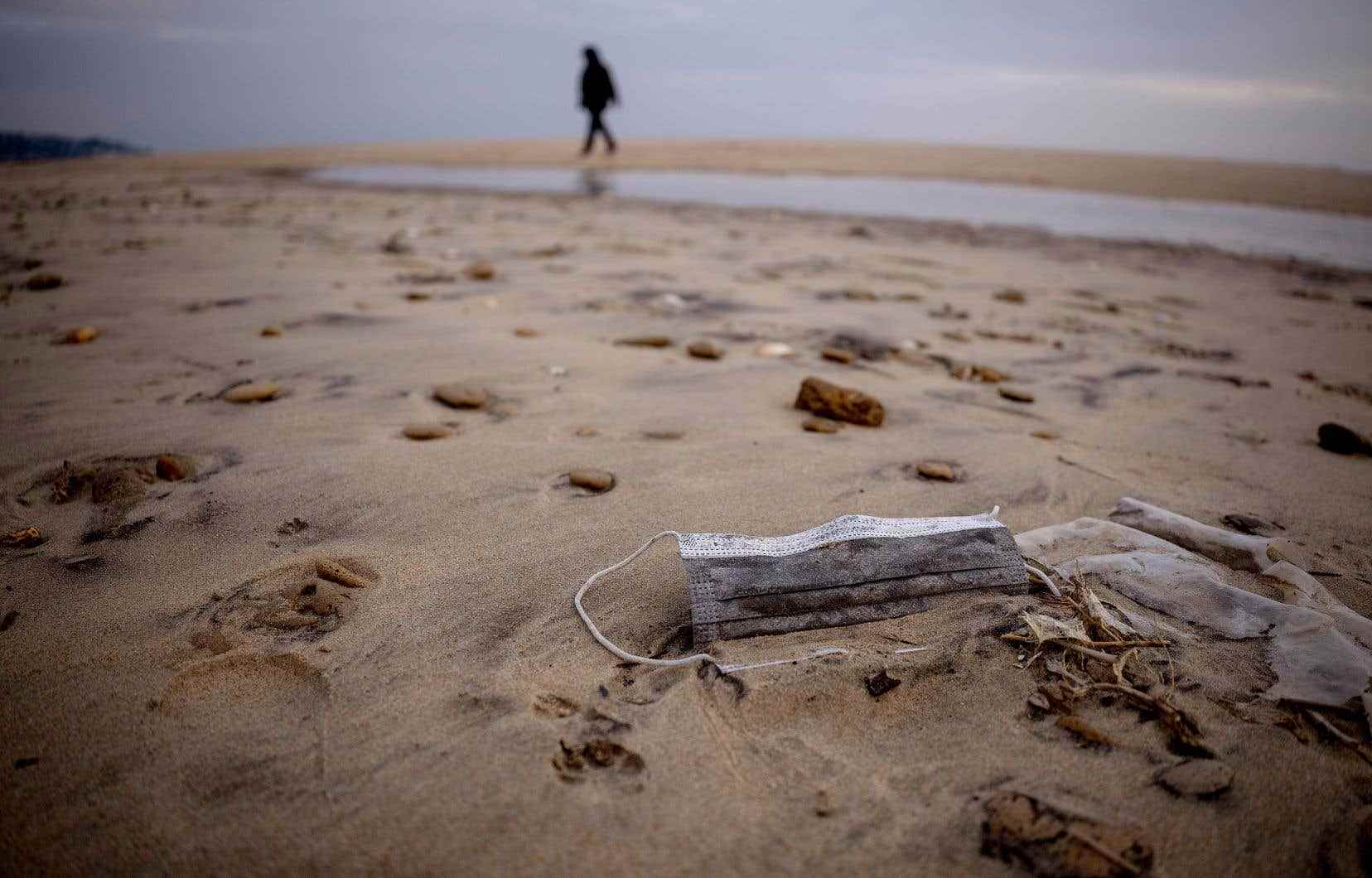If the masks no longer run the streets, they have not left the coast. Driven by the wind and the waves, many face coverings line the beaches, contaminating the water with millions of plastic microparticles.
Made of polypropylene, a surgical mask takes “several hundred years” to disappear, says Chunjiang An, assistant professor in the Department of Building, Civil and Environmental Engineering at Concordia University. So, if wearing a mask is no longer mandatory in most public places in Quebec, the management of this waste remains a topical issue.
With doctoral student Zheng Wang, specialists from the University of Regina, Fisheries and Oceans Canada and Memorial University, Dr. An studied the deterioration of disposable masks on the coast and the risks it poses. .
The study results demonstrate that once altered by environmental conditions at a shoreline, a single face covering can release over 1.5 million microplastics into the water.
Mr. An reassures, indicating that it is impossible to inhale this type of particle while wearing a new mask. It is the exposure to sand abrasion, water movement and sunlight that causes the mask to “easily tear and release many microplastics”, explains the professor to the To have to.
These particles, which are very fine and invisible to the naked eye, “do exist in water”, he specifies. Ingested by fish, they then contaminate the rest of the food chain, which threatens both animals and human health.
An unusual waste
Before the pandemic, coastlines were already major “plastic sinks”, since detritus is often deposited there “by waves, water or wind”, notes the researcher. Adding to the myriad of waste that is already polluting our planet, the single-use masks advocated during the COVID-19 pandemic pose a “new environmental challenge”. “Some people don’t treat masks as regular trash. They wear them, then throw them away [dans la rue] “, he laments.
The publication of the study in 2021 raised awareness among the population. But that was just the first step for the Concordia University duo. Since then, he has collaborated with a “major mask manufacturer” in search of biodegradable materials, which could replace polypropylene.
The challenges are numerous, since the new mask will have to “both meet environmental requirements and filtration quality requirements”. But hope is not in vain. In France, the company CP Projects designed in 2021 a biodegradable and compostable surgical mask compliant with the national standard, made of biopolymers.
Other researchers are interested in their recyclable potential. At the State University of Washington, for example, scientists have concluded that the fibers of the masks, mixed with concrete, make the material stronger. Others convert them back into chairs.
There is no shortage of ideas, but reusing masks is difficult. In addition to being contaminated once used, the face coverings are made of different materials – the main part and the rubber bands in various polymers, the nose bridge in metal – which must be separated before recycling can take place.
For his part, Mr. An is now conducting a similar study on disposable medical gloves.
This content is produced in collaboration with Concordia University.
